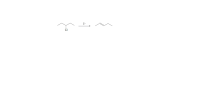
Chemistry
10th Edition
ISBN: 9781305957404
Author: Steven S. Zumdahl, Susan A. Zumdahl, Donald J. DeCoste
Publisher: Cengage Learning
expand_more
expand_more
format_list_bulleted
Concept explainers
Question
The attached reaction does not afford the major product that is given.Explain why this is so, and draw the structure of the major product actually formed.

Transcribed Image Text:CI
Expert Solution
This question has been solved!
Explore an expertly crafted, step-by-step solution for a thorough understanding of key concepts.
Step by stepSolved in 3 steps with 3 images

Knowledge Booster
Learn more about
Need a deep-dive on the concept behind this application? Look no further. Learn more about this topic, chemistry and related others by exploring similar questions and additional content below.Similar questions
- Draw the products of the reaction shown. Electron flow is indicated with curved arrows. H₂C CI:arrow_forwardConsider the electrophilicaromatic substitution reaction shown and draw the structure of the resulting organic product.arrow_forwardCurved arrows are used to illustrate the flow of electrons. Using the provided starting and product structures, draw the curved electron-pushing arrows for the following reaction or mechanistic step(s). Be sure to account for all bond-breaking and bond-making steps.arrow_forward
- Solve it asaparrow_forwardIn the acid-catalyzed aromatic alkylation involving 1-methylcyclohexene and benzene, two isomeric products are possible, but only one is formed, as shown here. Draw the complete mechanism that leads to each product, and explain why only one isomer is formed.arrow_forwardQuestion: Draw the mechanism of the reaction you will complete in lab. Use the proper arrow drawingconvention to show all bond making and bond breaking steps in the reaction. Background info: A substitution reaction takes place when a nucleophile (Nu:) forms a bond with a carbonatom, displacing a leaving group (L).SN2 reactionLeaving groups are typically weak Bronsted bases that are stable as anions (often halide anions).The precise timing of when the leaving group leaves depends on the structure of the substrate –the molecule bearing the leaving group. Methyl and primary alkyl halides tend to undergo SN2type reactions. In this type of reaction, the nucleophile attacks the carbon from the side oppositethe leaving group and the nucleophile-carbon bond is made simultaneous with the carbon-leavinggroup bond breaking. SN2 reactions are one-step and there is an inversion of stereochemistry atthe carbon bonded to the nucleophile.SN1 reactionIf the carbon undergoing substitution is…arrow_forward
- Draw the major product of this reaction. Include stereochemistry if applicable. Ignore byproducts. CH₂OH heatarrow_forwardIdentify the major organic product of this reaction and draw the mechanism.arrow_forwardDraw the complete, detailed mechanism (curved arrows) for the following reaction. Br 2. H₂O OKarrow_forward
arrow_back_ios
SEE MORE QUESTIONS
arrow_forward_ios
Recommended textbooks for you
 ChemistryChemistryISBN:9781305957404Author:Steven S. Zumdahl, Susan A. Zumdahl, Donald J. DeCostePublisher:Cengage Learning
ChemistryChemistryISBN:9781305957404Author:Steven S. Zumdahl, Susan A. Zumdahl, Donald J. DeCostePublisher:Cengage Learning ChemistryChemistryISBN:9781259911156Author:Raymond Chang Dr., Jason Overby ProfessorPublisher:McGraw-Hill Education
ChemistryChemistryISBN:9781259911156Author:Raymond Chang Dr., Jason Overby ProfessorPublisher:McGraw-Hill Education Principles of Instrumental AnalysisChemistryISBN:9781305577213Author:Douglas A. Skoog, F. James Holler, Stanley R. CrouchPublisher:Cengage Learning
Principles of Instrumental AnalysisChemistryISBN:9781305577213Author:Douglas A. Skoog, F. James Holler, Stanley R. CrouchPublisher:Cengage Learning Organic ChemistryChemistryISBN:9780078021558Author:Janice Gorzynski Smith Dr.Publisher:McGraw-Hill Education
Organic ChemistryChemistryISBN:9780078021558Author:Janice Gorzynski Smith Dr.Publisher:McGraw-Hill Education Chemistry: Principles and ReactionsChemistryISBN:9781305079373Author:William L. Masterton, Cecile N. HurleyPublisher:Cengage Learning
Chemistry: Principles and ReactionsChemistryISBN:9781305079373Author:William L. Masterton, Cecile N. HurleyPublisher:Cengage Learning Elementary Principles of Chemical Processes, Bind...ChemistryISBN:9781118431221Author:Richard M. Felder, Ronald W. Rousseau, Lisa G. BullardPublisher:WILEY
Elementary Principles of Chemical Processes, Bind...ChemistryISBN:9781118431221Author:Richard M. Felder, Ronald W. Rousseau, Lisa G. BullardPublisher:WILEY

Chemistry
Chemistry
ISBN:9781305957404
Author:Steven S. Zumdahl, Susan A. Zumdahl, Donald J. DeCoste
Publisher:Cengage Learning

Chemistry
Chemistry
ISBN:9781259911156
Author:Raymond Chang Dr., Jason Overby Professor
Publisher:McGraw-Hill Education

Principles of Instrumental Analysis
Chemistry
ISBN:9781305577213
Author:Douglas A. Skoog, F. James Holler, Stanley R. Crouch
Publisher:Cengage Learning

Organic Chemistry
Chemistry
ISBN:9780078021558
Author:Janice Gorzynski Smith Dr.
Publisher:McGraw-Hill Education

Chemistry: Principles and Reactions
Chemistry
ISBN:9781305079373
Author:William L. Masterton, Cecile N. Hurley
Publisher:Cengage Learning

Elementary Principles of Chemical Processes, Bind...
Chemistry
ISBN:9781118431221
Author:Richard M. Felder, Ronald W. Rousseau, Lisa G. Bullard
Publisher:WILEY